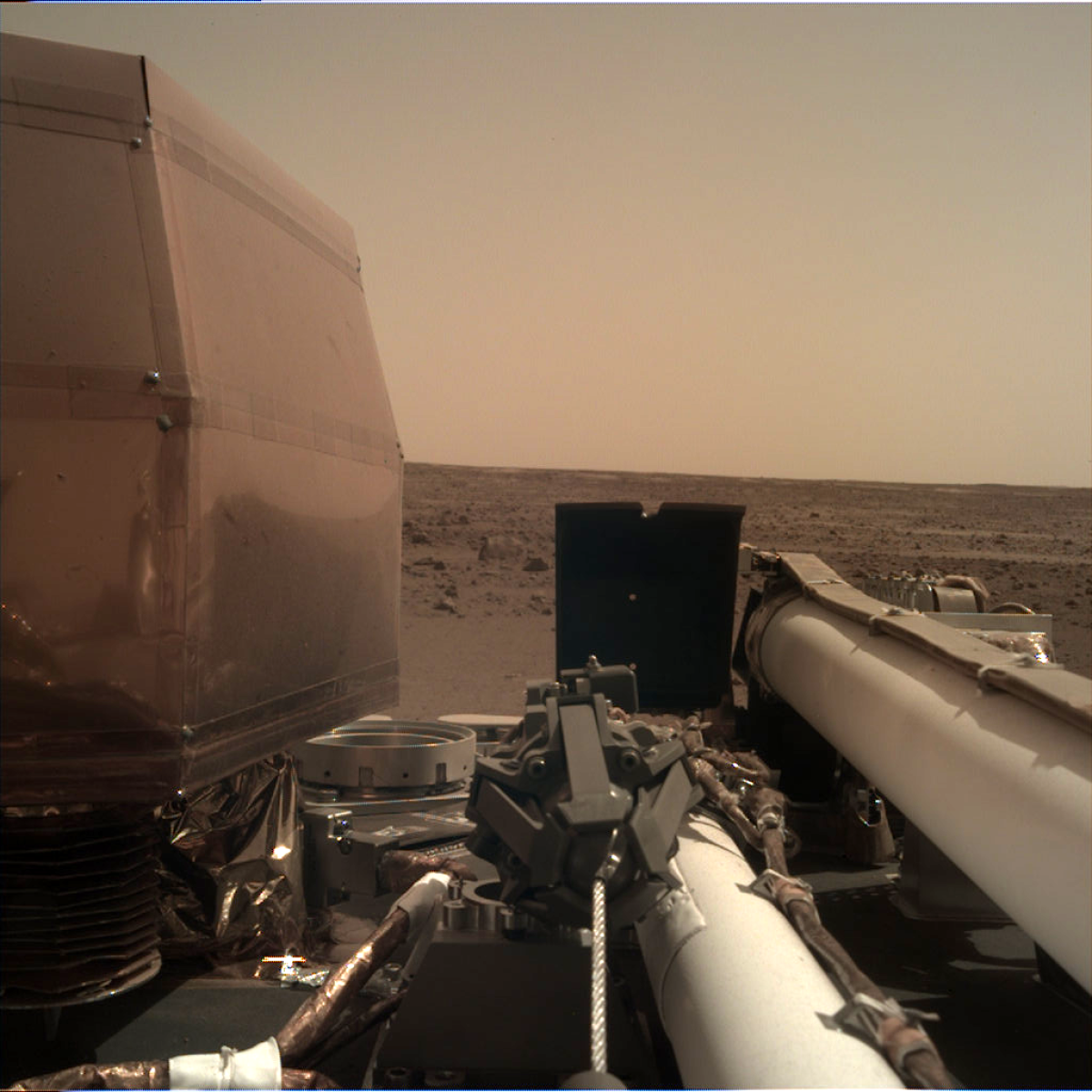Flat Earthers are not pleased about NASA's latest mission to Mars, which saw the space agency's InSight lander arrive at the red planet on Monday.
The InSight mission aims to explore the structure of Mars—its crust, mantle and core. This will help scientists answer questions about its formation, as well as giving an insight into other rocky planets—in our solar system and beyond.
InSight launched from Earth in May and landed safely on Mars after "seven minutes of terror." During this time, the spacecraft had to slow down from 12,300 mph to just 5 mph as it descended through the Martian atmosphere. Several hours after landing, InSight sent the first images showing where it had touched down.
Read more: A mystery seismic wave just swept Earth—but scientists can't work out why

This was an incredible feat of engineering. It was approved by NASA in 2012 and since then scientists from across the world have worked to make it a reality.
A statement from NASA said: "When it comes to rocky planets, we've studied only one in detail: Earth. By comparing Earth's interior to that of Mars, InSight's team members hope to better understand our solar system. What they learn might even aid the search for Earth-like exoplanets, narrowing down which ones might be able to support life. So while InSight is a Mars mission, it's also much more than a Mars mission."
But flat Earthers are not convinced. Since the landing, they have taken to various social media outlets to discuss how the landing was faked and that NASA is hiding something.
#flatearth #fakespace 😂😂😂 please I’m not 6 anymore 💩💩 pic.twitter.com/e2p84cYYJA
— BE AWAkE not ASLEEP (@flat_its) November 27, 2018
Please, tell me nobody is falling, yet again, for another fake Mars landing? Landing on Mars would be like landing on a non-solid, flicking sonoluminescent light...because that is all Mars is. Don't be suckered into this nonsense again... pic.twitter.com/EssNgpim1u
— Gregory Lessing Garrett #TheScientismDelusion (@ScientismDelus) November 27, 2018
How do people believe they can tell the inside of a so called #Planet by sending #MarsQuakes, anyone who believes this needs their heads checked! Really she even asks him how can he do it with one devise instead of three to pick up the waves! #MarsHoax, #NASAlies ! #FlatEarth !!! pic.twitter.com/mA31I4RH7F
— WeAreWakinUp🇮🇪 (@WeAreWakinUp) November 29, 2018
Needless to say, InSight did indeed land on Mars—a round, rocky planet located just under 40 million miles away.
Andrew Coates, Professor of Physics at the U.K.'s University College London, is part of a forthcoming European Space Agency mission to the Red Planet—ExoMars 2020. He told Newsweek: "Mars is certainly round, as revealed by decades of space missions since the start of the space age, and by hundreds of years of telescopic observations before that. In fact, a look at the night sky yourself around dusk tonight shows Mars shining [red coloured bright star] in the South, visible to the naked eye, but better in binoculars or a small telescope. Larger telescopes like the Hubble Space Telescope show that Mars is spinning on its axis and it presents different faces to us as it rotates.
"Also we have several current orbiters at Mars including ESA's Mars Express and ExoMars Trace Gas Orbiter [TGO], NASA's MRO, MAVEN, and Odyssey, and India's Mars Orbiter Mission, all of which are in orbit around a round planet. In addition there are current landers and rovers on the surface, including NASA's Insight, Curiosity and Opportunity all of which use the orbiters as data relays, relying on their orbits of a round planet to do that.
"We will rely on TGO for our own next mission, the ExoMars 2020 rover, which will drill up to two meters under the Mars surface to search for signs of past or even present life. We are leading the PanCam team for the rover, providing the geological and atmospheric context for the mission."
The InSight mission is expected to last for two years. You can read all about the scientific research being carried out during this time here. You can also read about what flat Earthers think about other planets here.
Uncommon Knowledge
Newsweek is committed to challenging conventional wisdom and finding connections in the search for common ground.
Newsweek is committed to challenging conventional wisdom and finding connections in the search for common ground.
About the writer
Hannah Osborne is Nesweek's Science Editor, based in London, UK. Hannah joined Newsweek in 2017 from IBTimes UK. She is ... Read more
To read how Newsweek uses AI as a newsroom tool, Click here.








